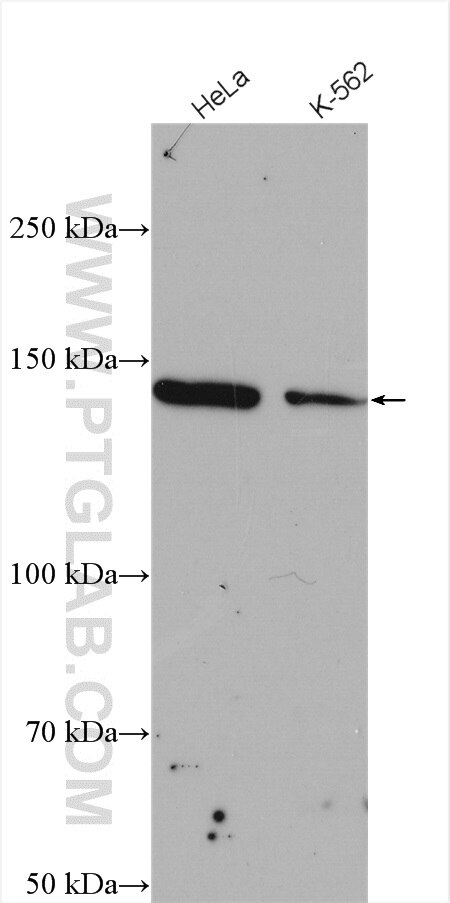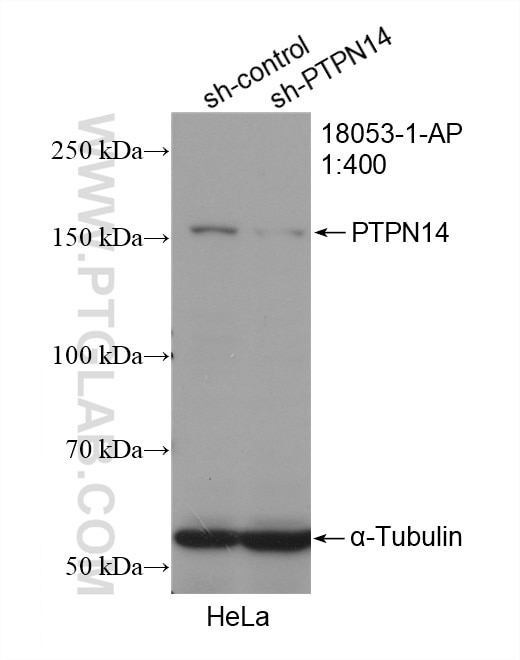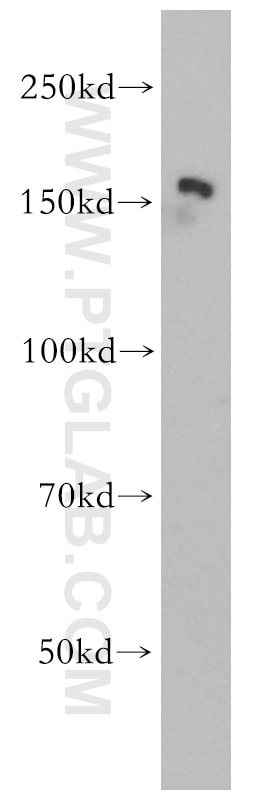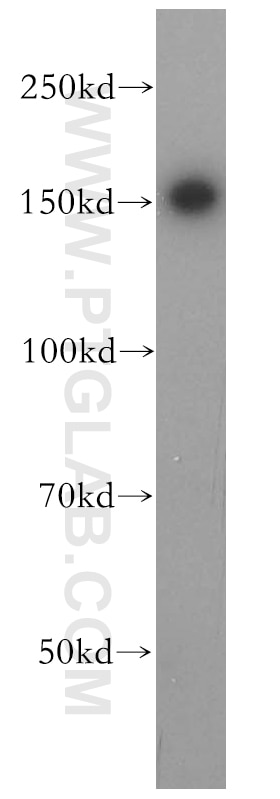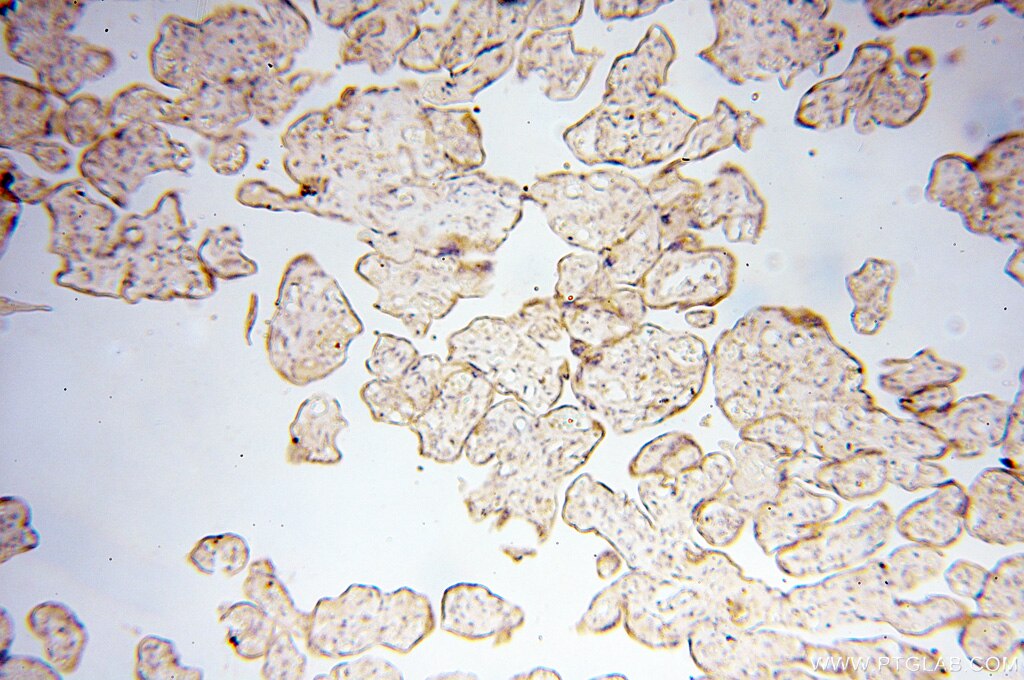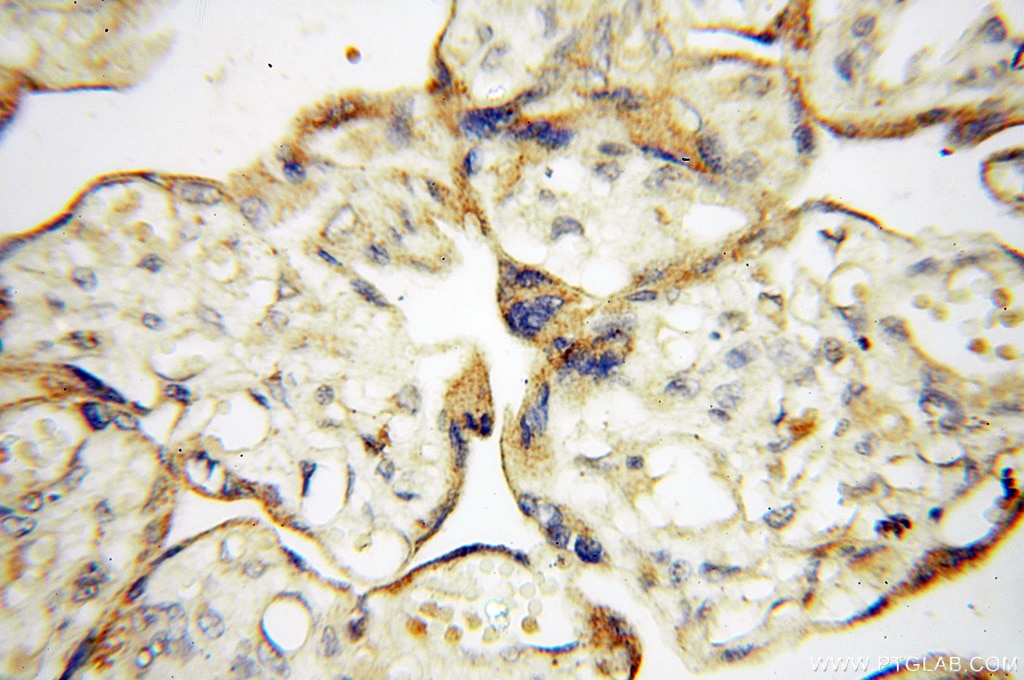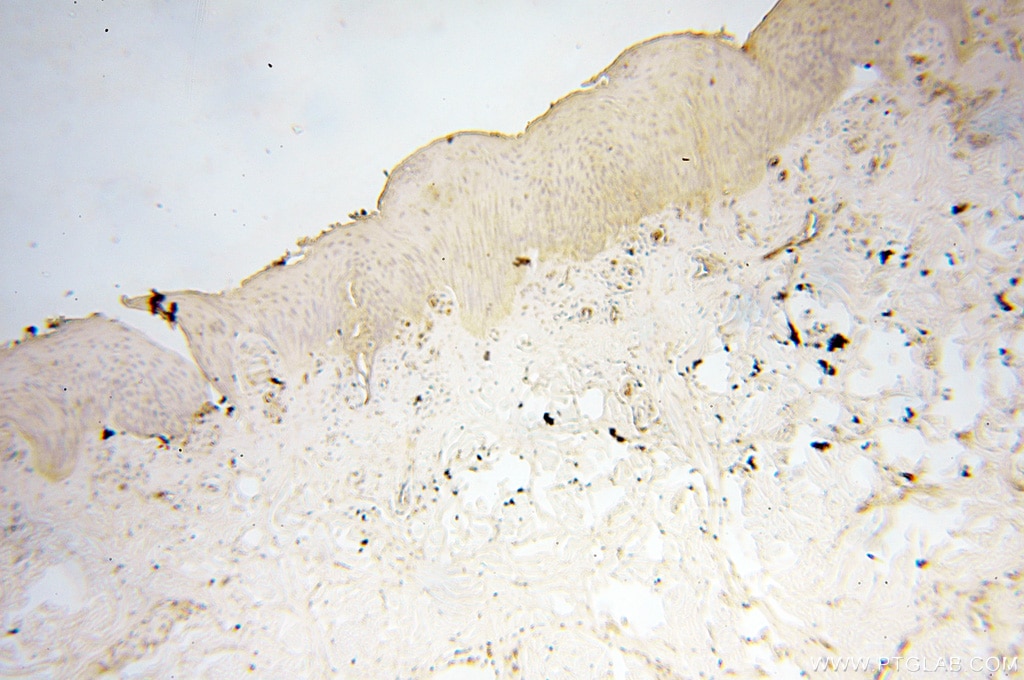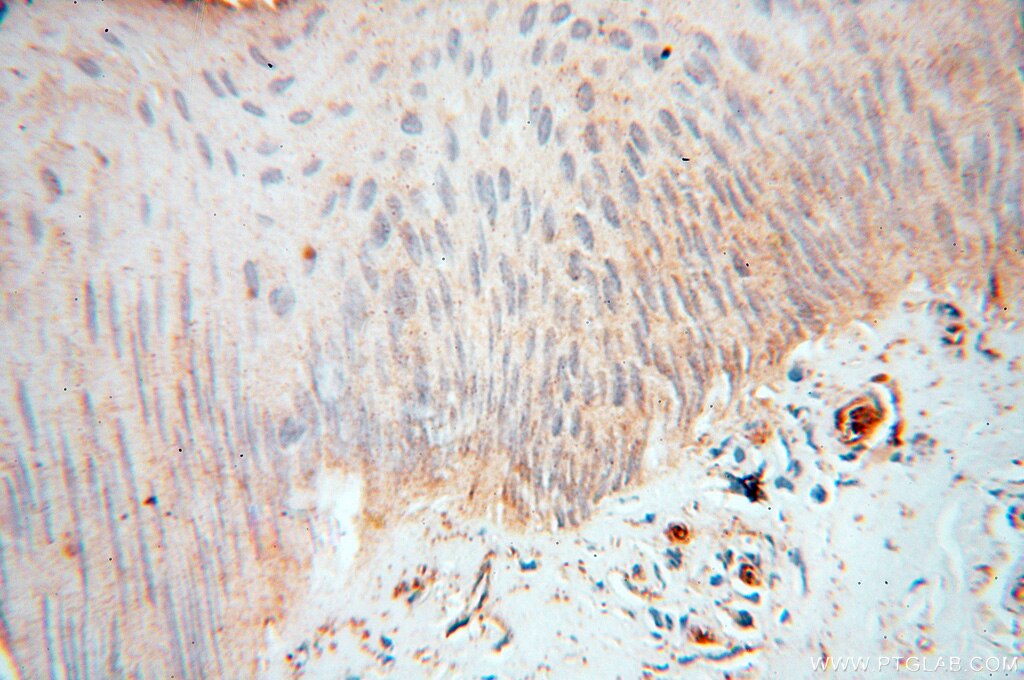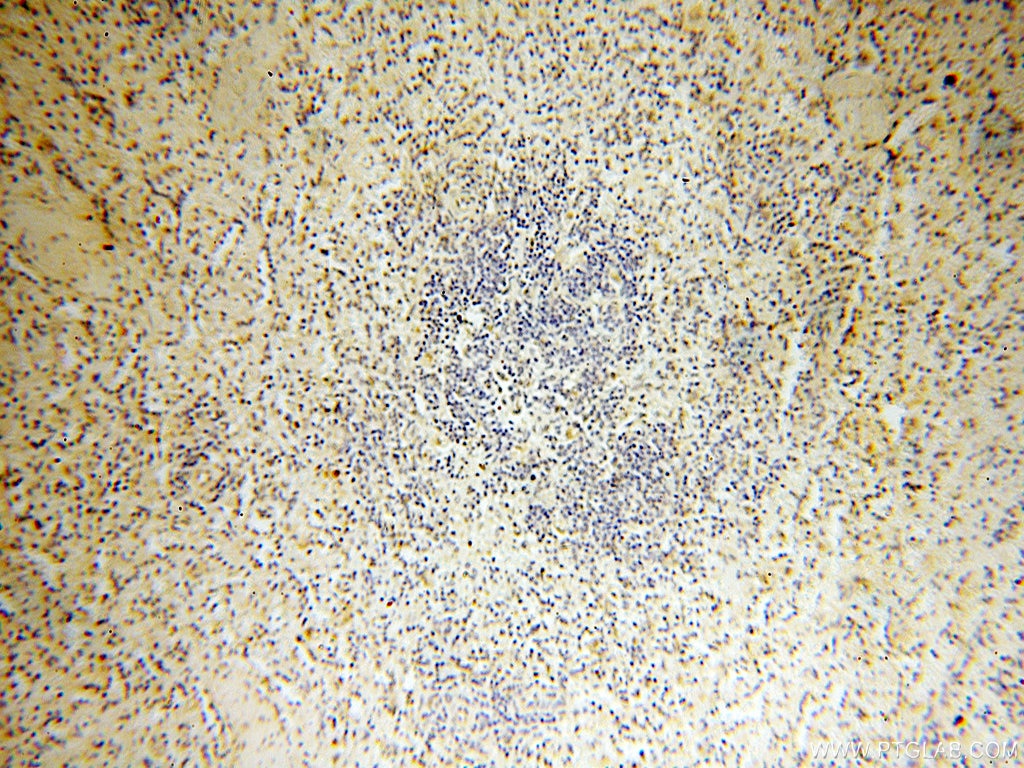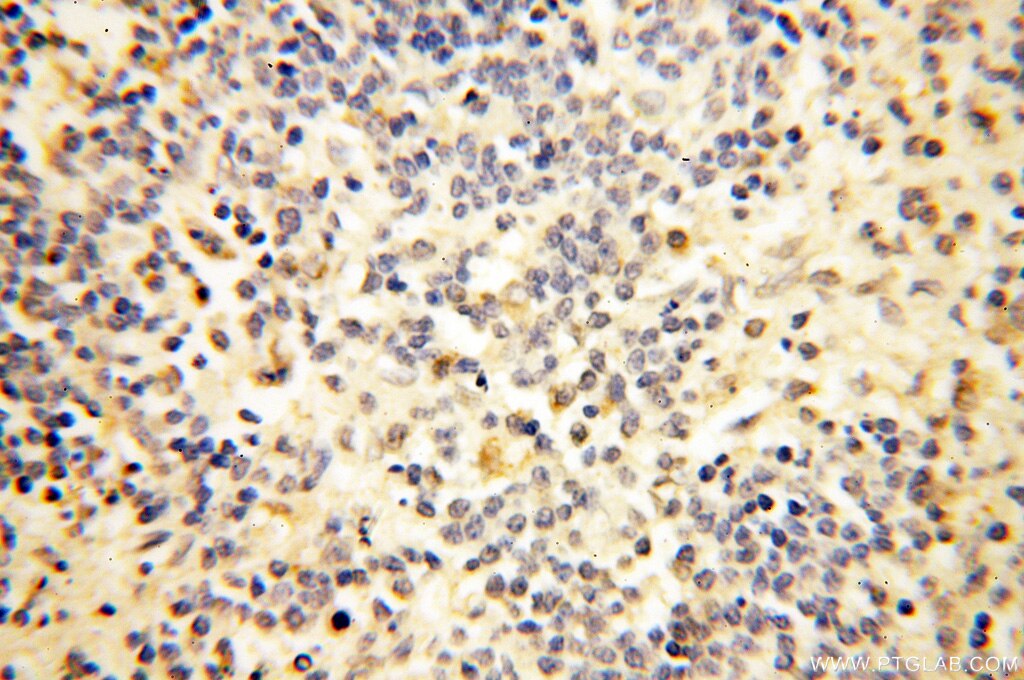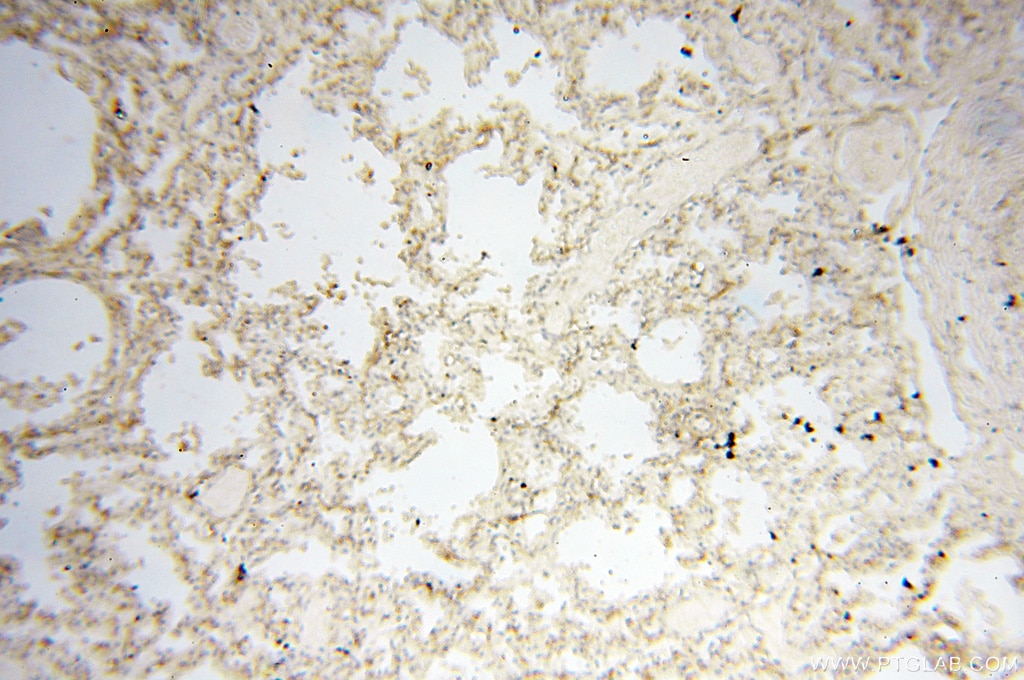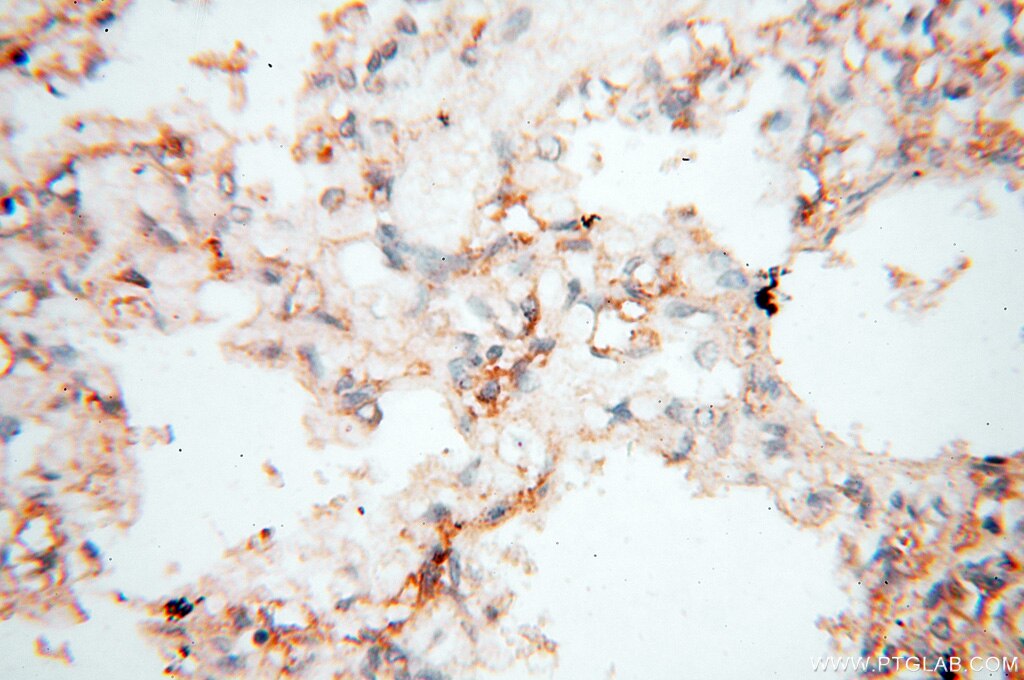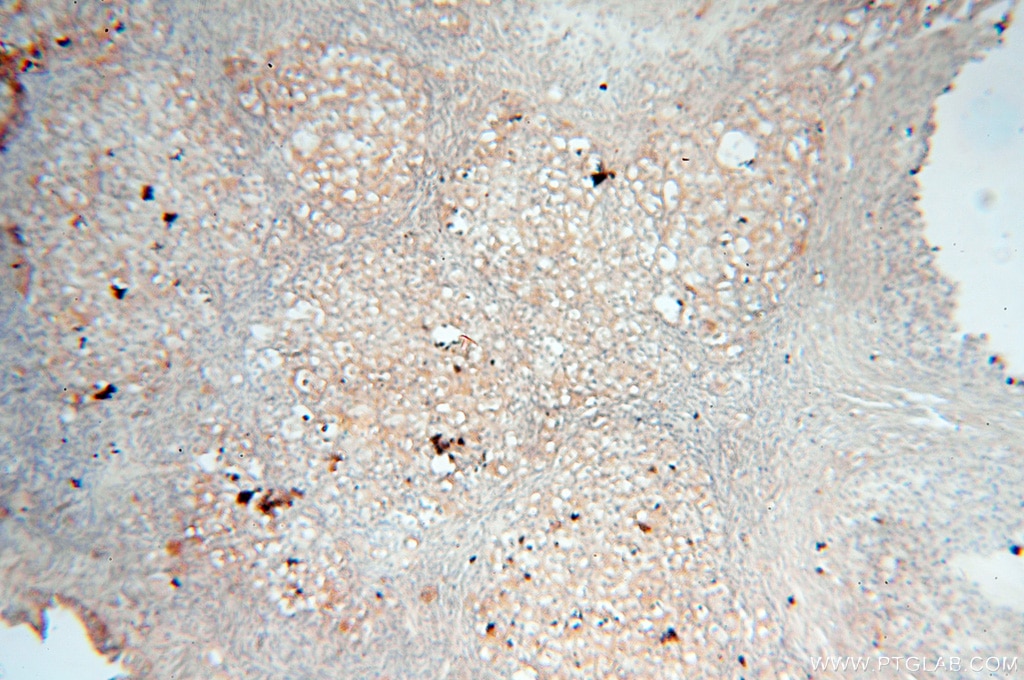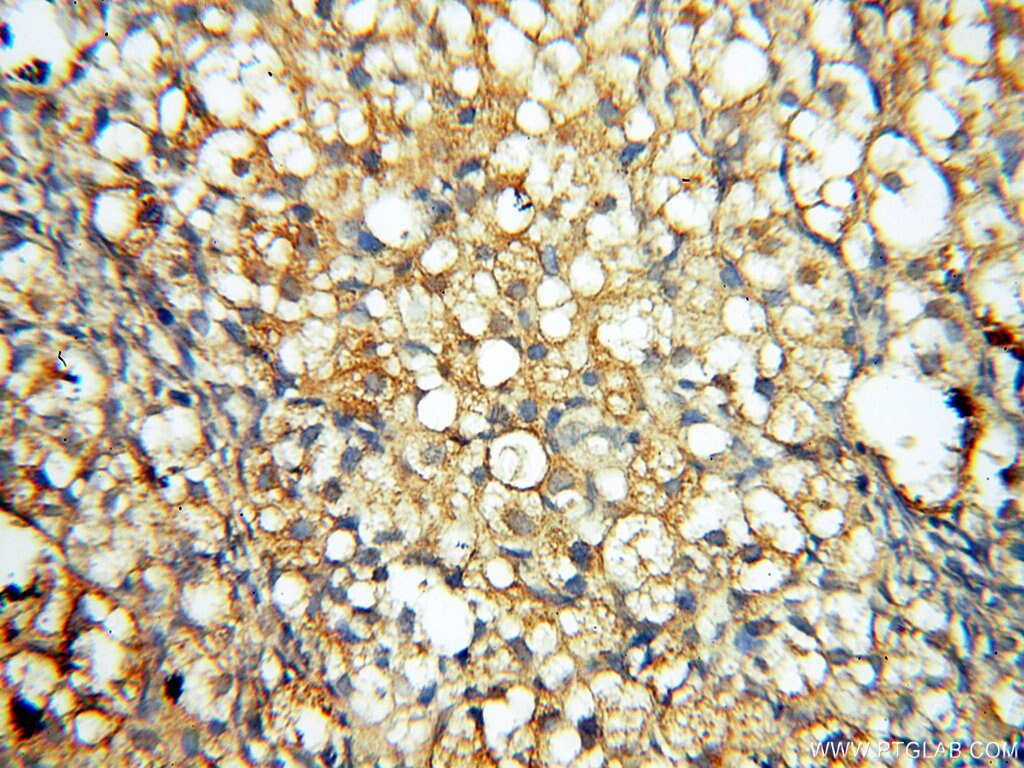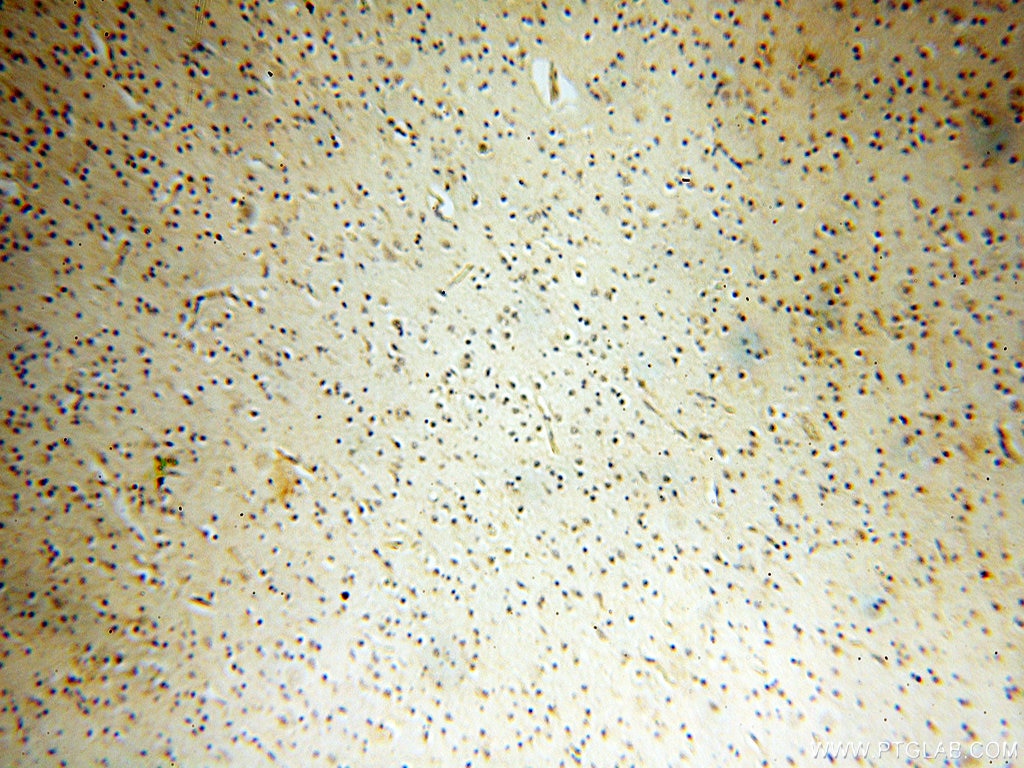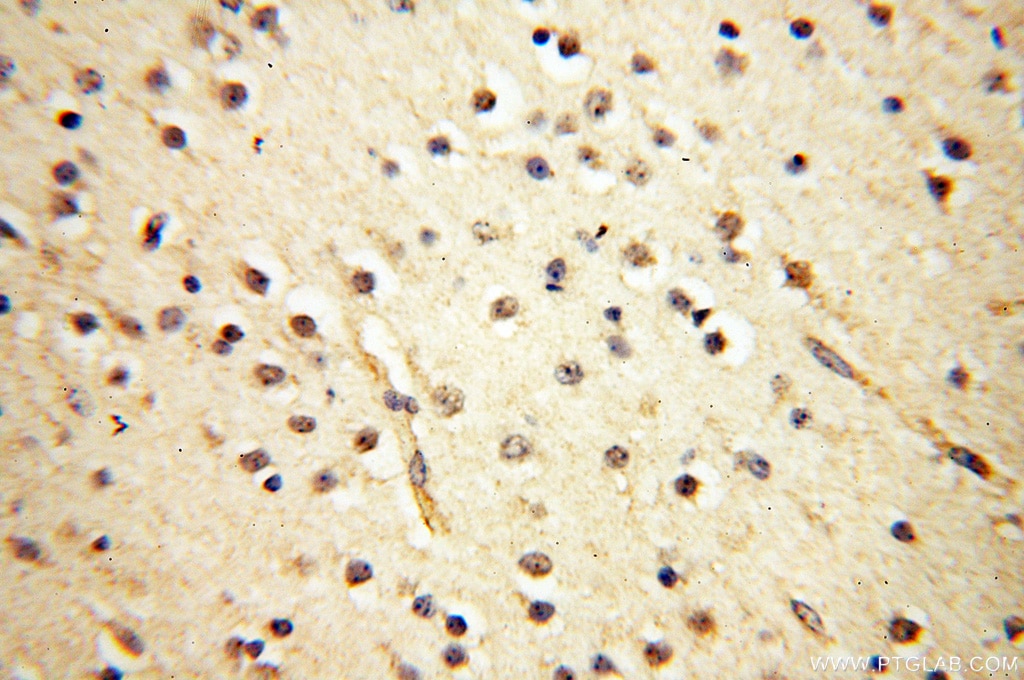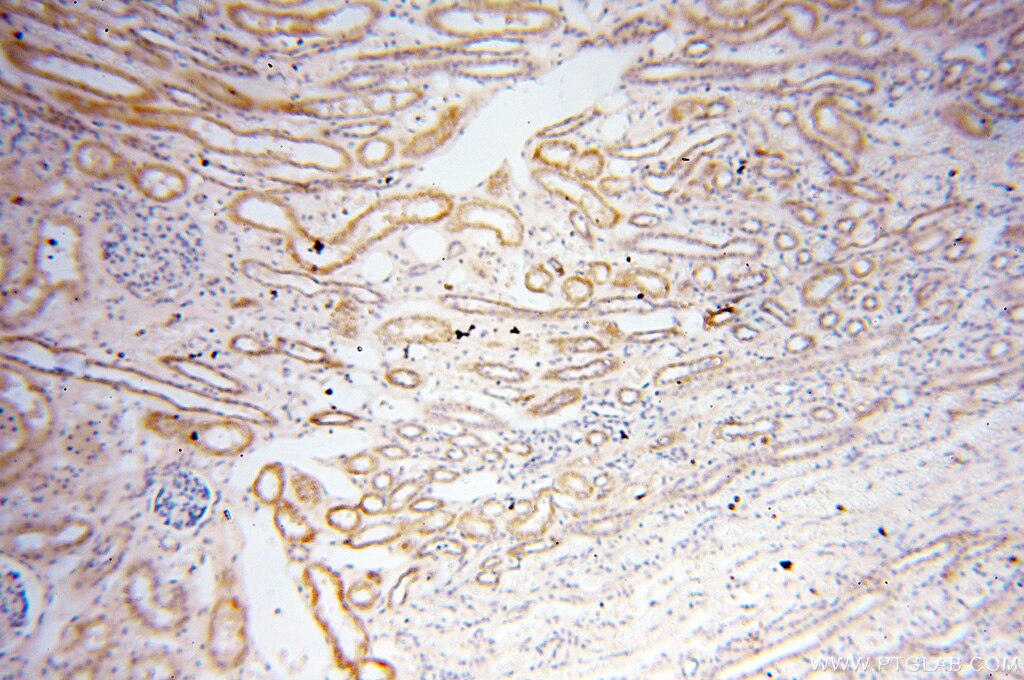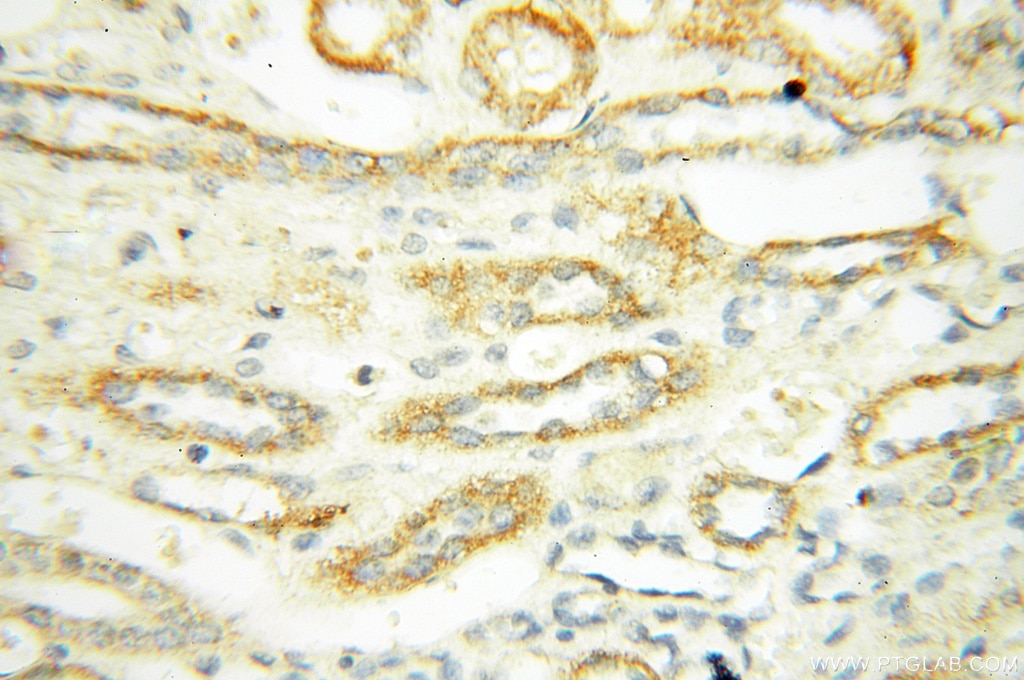- Phare
- Validé par KD/KO
Anticorps Polyclonal de lapin anti-PTPN14
PTPN14 Polyclonal Antibody for WB, IHC, ELISA
Hôte / Isotype
Lapin / IgG
Réactivité testée
Humain et plus (1)
Applications
WB, IHC, ELISA
Conjugaison
Non conjugué
N° de cat : 18053-1-AP
Synonymes
Galerie de données de validation
Applications testées
| Résultats positifs en WB | cellules HeLa, cellules K-562 |
| Résultats positifs en IHC | tissu placentaire humain, tissu cérébral humain, tissu cutané humain, tissu ovarien humain, tissu pulmonaire humain, tissu rénal humain, tissu splénique humain il est suggéré de démasquer l'antigène avec un tampon de TE buffer pH 9.0; (*) À défaut, 'le démasquage de l'antigène peut être 'effectué avec un tampon citrate pH 6,0. |
Dilution recommandée
| Application | Dilution |
|---|---|
| Western Blot (WB) | WB : 1:500-1:2000 |
| Immunohistochimie (IHC) | IHC : 1:20-1:200 |
| It is recommended that this reagent should be titrated in each testing system to obtain optimal results. | |
| Sample-dependent, check data in validation data gallery | |
Applications publiées
| WB | See 1 publications below |
Informations sur le produit
18053-1-AP cible PTPN14 dans les applications de WB, IHC, ELISA et montre une réactivité avec des échantillons Humain
| Réactivité | Humain |
| Réactivité citée | canin |
| Hôte / Isotype | Lapin / IgG |
| Clonalité | Polyclonal |
| Type | Anticorps |
| Immunogène | PTPN14 Protéine recombinante Ag12571 |
| Nom complet | protein tyrosine phosphatase, non-receptor type 14 |
| Masse moléculaire calculée | 1187 aa, 135 kDa |
| Poids moléculaire observé | 150 kDa |
| Numéro d’acquisition GenBank | BC101754 |
| Symbole du gène | PTPN14 |
| Identification du gène (NCBI) | 5784 |
| Conjugaison | Non conjugué |
| Forme | Liquide |
| Méthode de purification | Purification par affinité contre l'antigène |
| Tampon de stockage | PBS with 0.02% sodium azide and 50% glycerol |
| Conditions de stockage | Stocker à -20°C. Stable pendant un an après l'expédition. L'aliquotage n'est pas nécessaire pour le stockage à -20oC Les 20ul contiennent 0,1% de BSA. |
Informations générales
PTPN14 (tyrosine-protein phosphatase non-receptor type 14) is also named as PEZ and belongs to the protein-tyrosine phosphatase family and non-receptor class subfamily. It is a multi-domain protein expressed in breast, kidney, skeletal muscle, lung, placenta, and characterized by an N-terminal FERM domain and a C-terminal PTP domain with an intervening sequence containing an acidic region and a putative SH3 domain-binding sequence (PMID: 21701840). Defects in PTPN14 are a cause of choanal atresia and lymphedema (CHATLY).
Protocole
| Product Specific Protocols | |
|---|---|
| WB protocol for PTPN14 antibody 18053-1-AP | Download protocol |
| IHC protocol for PTPN14 antibody 18053-1-AP | Download protocol |
| Standard Protocols | |
|---|---|
| Click here to view our Standard Protocols |
